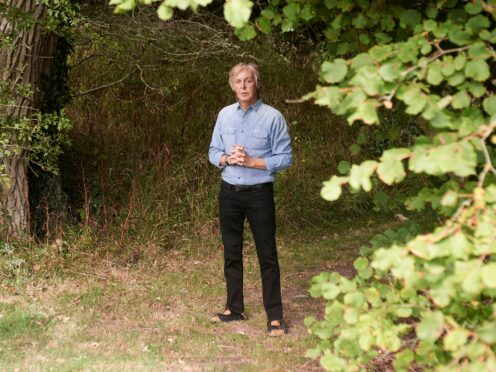Sir Paul McCartney has said revisiting the first song he ever wrote was “interesting” and “kind of turned into a therapy session”.
The Beatles star, 79, was speaking in reference to the song titled I Lost My Little Girl as he answered questions from fans about his new book, The Lyrics.
Released on November 2, the book features 154 songs from all stages of his career, spanning across the Beatles, Wings and as a solo artist, featuring song lyrics from titles such as Hey Jude, Blackbird, Penny Lane, Band On The Run, Live And Let Die and more.
Asked by a fan about the process of putting the book together and about “lyrics or memories that came back to you and reminded you of a time you’d forgotten”, Sir Paul reminisced about writing his first song and the timing of it.

“It wasn’t really a forgotten memory, but revisiting the first song I ever wrote I Lost My Little Girl was interesting.
“It kind of turned into a therapy session, because I thought I was happily writing a little pop song when I was 14, but if you look at the timing of it I had just lost my mother,” he said.
Sir Paul explained: “When you think about that, the song seems to have a much deeper meaning that I hadn’t noticed before: the possibility of it being subliminally written about her.
“I’ve always said Let It Be was written after dreaming of my mum, but some of the lyrics from Yesterday might have been to do with my mum as well.
“Then there were surprising memories that would come out, like when I got into talking about John and was reminded of the hitchhiking trips we’d taken as kids, and with George.
“I think the whole process of analysing the songs took me to stuff that I hadn’t thought of recently, not because I didn’t want to, but because there was never a clue, never a prompt, never a trigger to think about those things.”
He added: “That was the interesting thing about making this book.
“I had to go back in my memory to see how I’d written that song, why I’d written it and any interesting side stories.
“It became about more than just the songs: it became the memories that the songs evoked.
“It was a nice process, actually.
“Better that being with a psychiatrist!”
The Lyrics also features unseen personal photographs, drafts and drawings from Sir Paul’s personal archive, with each song accompanied by a commentary offering insight into his creative process.
📆 Two weeks to go! In his first live in-person event in two years, Paul will appear at @southbankcentre to discuss his career-spanning book #PaulMcCartneyTheLyrics.
📺 Tickets to watch the event livestream are still available: https://t.co/yoJhfzbs3o pic.twitter.com/w2NSgrC7Kt
— Paul McCartney (@PaulMcCartney) October 22, 2021
Also included will be the words to the unrecorded Beatles song Tell Me Who He Is, after the handwritten lyrics to the lost song dating back to the early 1960s were discovered in one of Sir Paul’s notebooks.
The Lyrics has been edited and introduced by the Pulitzer Prize-winning Irish poet Paul Muldoon and has been shortlisted for the Waterstones Book of the Year prize.
Sir Paul’s answers to fan questions will be posted on his official website, PaulMcCartney.com, on November 2.
The Lyrics: 1956 To The Present by Paul McCartney is out November 2 2021.
